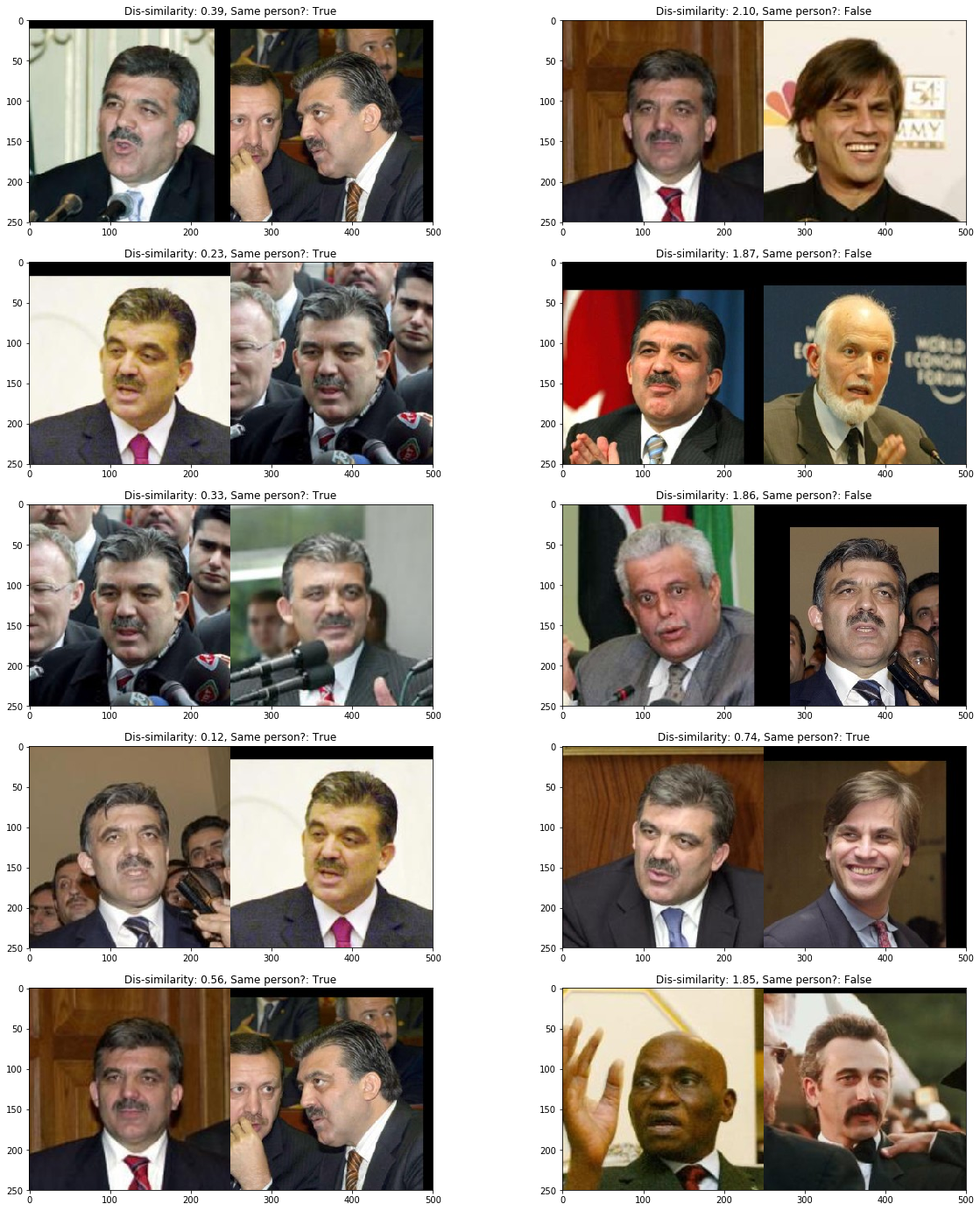- Python >= 3.6
-
Clone the github repo
git clone https://github.com/anujkhare/face-similarity-pytorch.git cd face-similarity-pytorch -
Install requirements:
pip install -r requirements.txt -
Run the inference script:
python predict.py -img1 <path-to-image-1> -img2 <path-to-image-2>
Run
python predict.py --helpfor more options.
Use the jupyter notebook train-siamese.ipynb.
I used a Siamese network along with contrastive loss for learning (dis)similarity between image pairs.
Refer to src for details and the code.
Only used the LFW data set.
- Randomly separate all images of some people for the test set
- From all images in the training part, split out training/validation image sets
The held-out set will contain people that the model would have never seen during training/validation.
- Use dlib face detection to crop a tight bbox around the face. Expand the b-box by 20% on all sides to incorporate more context.
- Apply some random transformations (horizontal flip, rotations)
- Resize and/or pad to
160 * 160
Given two images, the label is defined as:
- 0: if the images belong to different people
- 1: if the images belong to the same person
We'll pick up pairs of images from the given set using the following strategy:
- Positive pair: pick the next positive pair from all the available pairs
- Negative pair: for one of the images picked for the positive pair, find a random negative image
Below are some sample pre-processed pairs:
Each row is a pair, every alternate row starting with the first is a positive pair.
- Find the predicted distances on validation set pairs
- Choose a distance threshold that maximizes the F1
From the train set:
From the val set:
From the test set:
Loss curves:
Usinng threshold=1.5:
| Data split | F1 | N-pairs |
|---|---|---|
| Train | 98.74% | 12000 |
| Val | 93.81% | 12000 |
| Test | 57.61% | 420 |
The FaceNet paper as well as the implementation in OpenFaces use a "triplet loss" for the metric learning. I chose
Presently, I am sampling all possible positive pairs and an equal number of randomly chosen negative pairs.
Better sampling strategies or online hard example mining would improve results.
I didn't use any pre-trained models since accuracy was not the main focus here. If needed, VGG-Face seems like a great choice!





